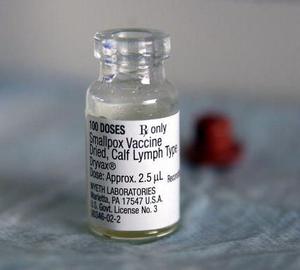Critical infrastructureWikiLeaks reveals U.S. anxious over infrastructure vulnerability
Among the leaked documents released by WikiLeaks is a secret list of infrastructure-related facilities and topics, from pipelines to smallpox vaccine suppliers, whose loss or attack by terrorists could “critically impact” U.S. security in the view of the State Department; the February 2009 cable from the State Department requested overseas U.S. missions update a list of infrastructure and resources around the globe “whose loss could critically impact the public health, economic security and/or national and homeland security of the United States”; the list includes undersea cables, communications, ports, mineral resources, and firms of strategic importance in countries ranging from Austria to New Zealand

Critical target identified by WikiLeaks // Source: cbsnews.com
WikiLeaks has released a secret list of infrastructure-related facilities and topics, from pipelines to smallpox vaccine suppliers, whose loss or attack by terrorists could “critically impact” U.S. security in the view of the State Department.
The February 2009 cable from the State Department requested overseas U.S. missions update a list of infrastructure and resources around the globe “whose loss could critically impact the public health, economic security and/or national and homeland security of the United States.”
The cable asked diplomats to identify “systems and assets, whether physical or virtual, so vital to the United States the incapacitation or destruction of such systems and assets would have a debilitating impact on security, national economic security, national public health or safety, or any combination of those matters.”
The cable is marked “secret state … noforn, not for internet distribution.” “Noforn” means it should not be shown to foreign governments or other non-U.S. interests.
AFP reports that based on responses from U.S. missions around the world, the Department of State prepared a list of critical infrastructure facilities, assets, and resources which are vital to U.S. national security and welfare. The list includes undersea cables, communications, ports, mineral resources, and firms of strategic importance in countries ranging from Austria to New Zealand.
The cable said the State Department, in coordination with DHS, was seeking input from embassies on “critical infrastructure and key resources within their host countries which, if destroyed, would likely have an immediate and deleterious effect on the United States.”
It said diplomats were “not being asked to consult with host governments with respect to this request.”
The request came under the National Infrastructure Protection Plan, which aims to enhance protection of key resources “to prevent, deter, neutralize or mitigate the effects of deliberate efforts by terrorists to destroy, incapacitate or exploit them; and to strengthen national preparedness, timely response, and rapid recovery in the event of an attack, natural disaster or other emergency.”
The cable reveals a vast range of sites and firms seen as vital to national interests and security, ranging from major infrastructure such as the Panama canal and oil pipelines to Belgian medical firms and Italian and Australian companies which produce snake-bite treatments.
In Europe, the Ludwigshafen plant of German chemical giant BASF was the “world’s largest integrated chemical complex” while Siemens AG in Erlangen was responsible for “essentially irreplaceable production of key chemicals.”
The cable describes Russia’s Nadym gas pipeline junction as “the most critical gas facility in the world.”
In the Middle East, it notes that “by 2012 Qatar will be the largest source of imported LNG (liquefied natural gas)” to the United States.
The hundreds of entries in the document leaked on Sunday also include mines and mineral resources in Africa and South America, undersea pipelines, cables, and ports in China and Japan, French medical and pharmaceutical companies and shipping terminals and crude oil refineries in the Middle East.
In addition the list includes Danish and German suppliers of smallpox and rabies vaccines, British defense contractors and telecommunications facilities, chromite mines in India, and dams and hydro-electric projects in Canada which supply power to the United States.
WikiLeaks created an international firestorm when it started releasing more than 250,000 classified State Department cables on 28 November, which have included embarrassing details of American diplomats’ private assessments of foreign leaders.
‘“Targets for terror”
The Times reported reported the story with the headline “WikiLeaks lists ‘targets for terror’ against U.S.”
“There are strong and valid reasons information is classified, including critical infrastructure and key resources that are vital to the national and economic security of any country,” Crowley told he Times.
“Julian Assange (WikiLeaks’s founder) may be directing his efforts at the United States but he is placing the interests of many countries and regions at risk. This is irresponsible,” he added.
The U.K. government also condemned the publication of the document. “The leaks and their publication are damaging to national security in the United States, Britain and elsewhere,” a spokesman for the Prime Minister David Cameron said in a statement, according to NBC News. “It is vital that governments are able to operate on the basis of confidentiality of information.”
Sir Malcolm Rifkind, a British lawmaker who has served as both defense and foreign secretary, told the Times that the publication of the list was “further evidence that they (WikiLeaks) have been generally irresponsible,” adding that it was “bordering on criminal.”
“This is the kind of information terrorists are interested in knowing,” added Rifkind, who now serves as chairman of the British parliament’s Intelligence and Security Committee.
